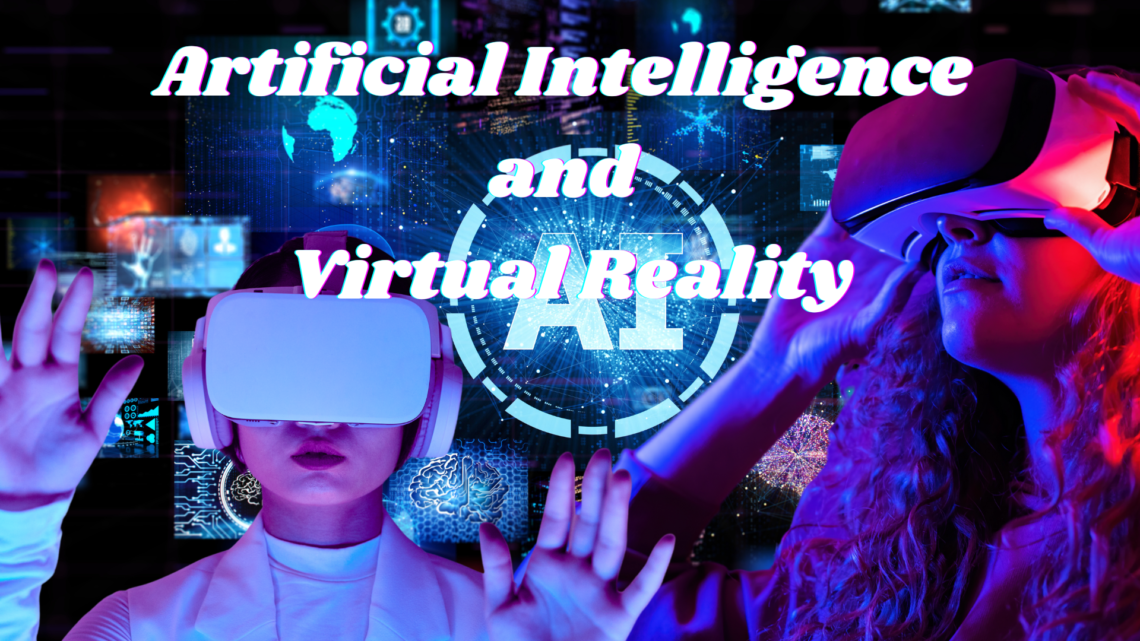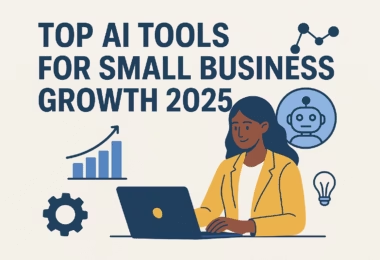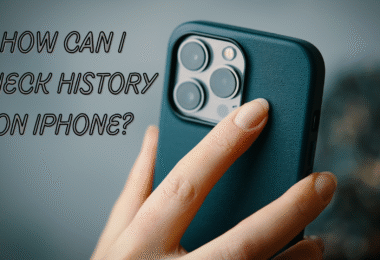In today’s fast-changing technological world, two of the most exciting innovations are Artificial Intelligence and Virtual Reality. Although both of these technologies have already made a huge impact on their own, when combined, they have the power to completely transform how we experience the digital world. In this blog, we’ll look at how AI and VR work together and how they are reshaping industries across the United States, from gaming and healthcare to education and real estate.
What Are Artificial Intelligence and Virtual Reality?
Before exploring the magic that happens when AI and VR come together, let’s first understand what each technology is.
- Artificial Intelligence (AI) refers to machines or software that can perform tasks that usually require human intelligence. These tasks include learning from data, making decisions, recognizing patterns, and predicting future outcomes. AI can adapt and respond to different situations, making it highly valuable in various fields.
- Virtual Reality (VR) is a technology that immerses users in a completely digital environment through the use of special VR headsets. With VR, users can interact with computer-generated environments that feel real. Unlike traditional screen experiences, VR creates an immersive experience that transports users to a different world.
How Artificial Intelligence and Virtual Reality Work Together
When AI and VR are combined, the results are truly magical. VR provides an immersive experience, and AI makes that experience even more dynamic, interactive, and intelligent. Together, they create virtual worlds that feel real and interact with users in ways that were once thought impossible. Here’s how AI and VR complement each other:
- Intelligent Environments: AI can control and modify VR environments in real-time, making them respond to what the user does. For example, in a VR game, non-playable characters (NPCs) can change their behavior based on how the player interacts with them, creating a more dynamic and lifelike experience.
- Personalized Experiences: AI has the ability to learn from users. By analyzing their data, AI can understand their preferences and actions, and use this information to adjust the VR environment. In an educational VR setting, AI might change the pace of lessons or the difficulty level to fit each student’s learning style, making the experience more personal and effective.
- Improved Interaction: AI enhances how users interact with VR. Instead of just using controllers or buttons, AI enables natural inputs like voice commands, hand gestures, or facial expressions. This allows users to engage with the virtual world in ways that feel more natural and intuitive.
The Impact of AI and VR in Various U.S. Industries
The combination of Artificial Intelligence and Virtual Reality is having a big impact on several industries in the United States. Let’s take a closer look at how these technologies are changing different sectors:
1. Gaming
The gaming world has been transformed by the combination of AI and VR. With VR, players are fully immersed in 360-degree virtual worlds, and AI makes those worlds feel alive. NPCs can respond intelligently to the player’s actions, which makes each gaming experience unique. AI also controls the difficulty of the game, adjusting it in real-time to keep players engaged and challenged.
2. Healthcare
AI and VR are also making a big difference in healthcare. In medical education, students can practice surgeries, patient care, and diagnostic tests in a safe, virtual environment. AI tracks their progress and gives feedback, adjusting the scenarios to match their skill level.
For patients, VR is used to help with pain management, reduce anxiety, and treat conditions like PTSD. AI can customize these virtual experiences to fit each patient’s needs, creating a personalized approach to therapy.
3. Education and Training
Education is another area where AI and VR are making a huge impact. Instead of relying on traditional textbooks, students can dive into immersive VR experiences where they can explore topics like history, science, or art firsthand. AI further enhances this by adjusting the learning experience to match each student’s pace and skill level, creating a more engaging and effective way to learn.
4. Real Estate
In real estate, AI and VR are revolutionizing the property-buying process. With VR, buyers can take virtual tours of homes and buildings without ever leaving their own home. This is especially useful in big cities like New York, Los Angeles, or Chicago, where visiting properties can be time-consuming.
AI makes this experience even better by analyzing buyer preferences and behavior, recommending properties that match their needs. This personalized approach makes the property search faster and more enjoyable for both buyers and sellers.
Why is This Combination Magical?
The magic of combining AI and VR lies in how they work together to make digital experiences more meaningful and interactive. On their own, both technologies are impressive, but together, they open up new possibilities. AI adds intelligence to VR, making the virtual environment adapt and respond to users in real-time. This makes interactions feel more natural and engaging, and creates experiences that are unique to each person.
As both AI and VR continue to improve, the potential for innovation is endless. Imagine entering a virtual world where everything changes based on your actions and preferences, where characters respond to you as if they were real, and where the environment shifts to match your needs. This is the future of AI and VR, and it’s just beginning.
Conclusion
AI and VR are transforming industries across the United States, from gaming and healthcare to education and real estate. These technologies are creating more interactive, immersive, and intelligent experiences. By combining the strengths of both, we are entering a new era where virtual worlds feel real and are tailored to individual needs.
As AI and VR continue to evolve, the possibilities for what they can achieve together are endless. We are only scratching the surface of their combined potential. The future is immersive, intelligent, and full of exciting new ways to experience the digital world around us. The magic of AI and VR is just getting started.
FAQs
1. What is AI (Artificial Intelligence)?
AI refers to technology that allows machines to perform tasks that typically require human intelligence, such as problem-solving, learning from experiences, and making decisions.
2. What is VR?
VR is a technology that creates immersive, digital environments you can explore using special headsets, allowing you to interact with virtual worlds as if they were real.
3. How do Artificial Intelligence and Virtual Reality work together?
When combined, AI enhances VR by making virtual worlds interactive and responsive. AI adjusts the environment in real-time based on your actions, creating a personalized and engaging experience.
4. How is AI and VR changing gaming?
AI and VR are changing how games are played! VR immerses players in 360-degree worlds, and AI makes NPCs react to your choices, adjusting challenges to keep the experience fresh and exciting.
5. How do AI and VR improve healthcare?
In healthcare, AI and VR allow students to practice procedures in a safe, virtual setting. AI also personalizes patient care, creating tailored therapies for pain management, anxiety reduction, and PTSD treatment.
6. How do AI and VR transform education?
AI and VR make learning more interactive! Instead of just reading textbooks, students can explore history, science, and more in virtual worlds, with AI adapting lessons to their individual progress and needs.
7. Why is the combination of AI and VR so special?
The combination of AI and VR brings virtual environments to life! AI makes everything responsive and dynamic, turning digital worlds into personalized, interactive experiences.








Leave a Comment